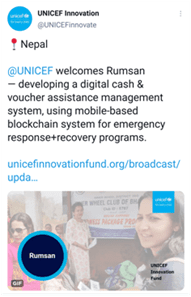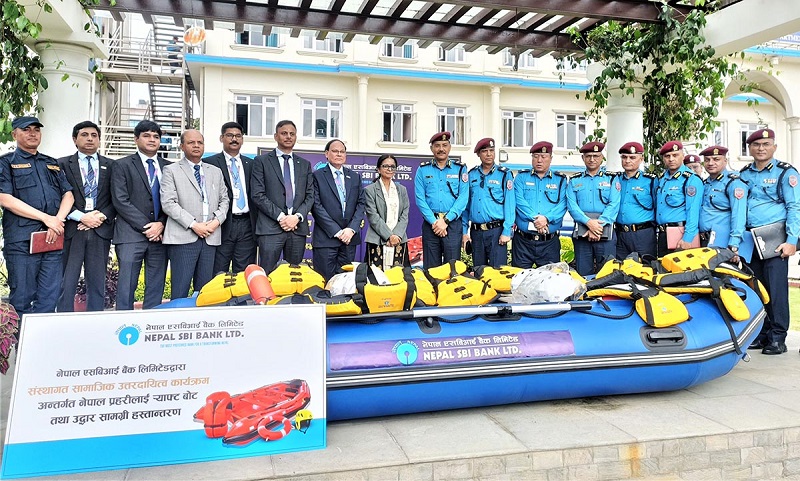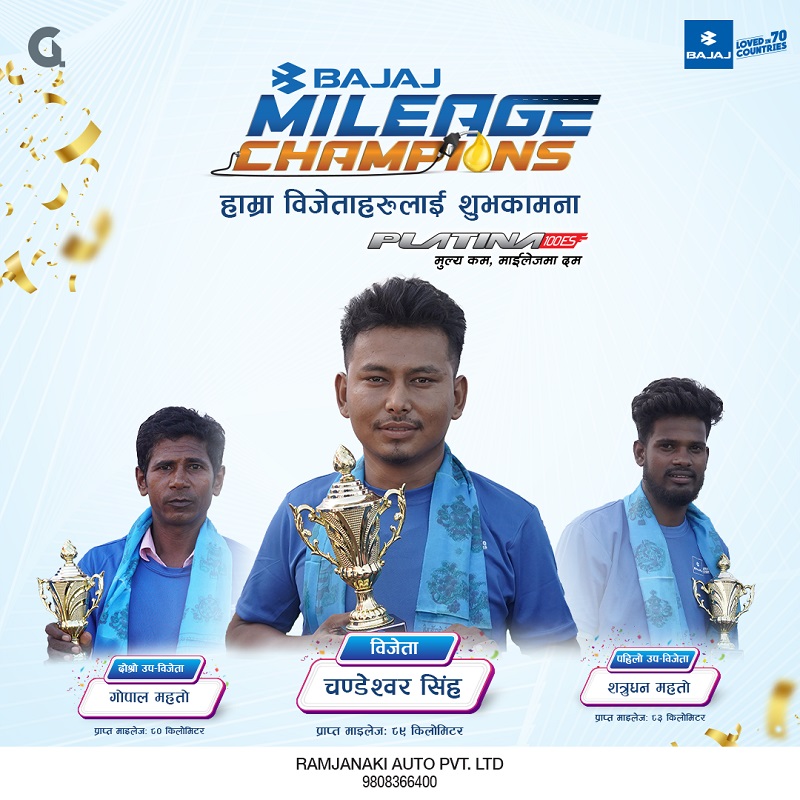Rahat Receives UNICEF Innovation Fund’s Investment of $100,000
10th June 2021, Kathmandu
The United Nations Children’s Fund (UNICEF), through its Innovation Fund, announced a new cohort of startups developing open-source, blockchain-based solutions to receive an equity-free investment of $100,000 and year-long mentorship — including eSatya(Rumsan), a blockchain startup in Nepal. As part of the UNICEF Innovation Fund’s portfolio, eSatya joins a community of problem solvers developing open source solutions further with frontier technology like blockchain to address inequities children face.
Developed by eSatya (Rumsan), the Rahat platform is an open-source, blockchain-based humanitarian aid distribution management system. Rahat’s main goal is to make the aid distribution process for vulnerable communities simple, efficient and transparent.
With the earthquake in 2015 and the current perils of the Covid-19 pandemic, it’s never been more obvious than now that during such crises, delivering aid quickly and efficiently to the affected is vital. But distributing aid is usually a labor-intensive and cumbersome process. In addition, high overhead costs and reports on corruption and fraud in aid distribution are quite prevalent.
According to the former UN Sec. General Ban Ki-Moon, around 30% of aid money is lost to corruption and fraud annually.
Rahat is inspired by the idea of bringing in quick relief with minimum overhead costs to counter the plight of countries like Nepal. Rahat hopes to plug leakages in aid distribution, involve local communities to build financial resilience, and tap into support for unbanked populations efficiently.
Rahat uses mobile-based blockchain tokens to manage and monitor the flow of aid transactions. Rahat platform includes an online dashboard, a digital wallet, a vendor app, and a QR code/SMS-based token redemption process for beneficiaries. Rahat’s online dashboard supports aid agencies in onboarding local partners/vendors and assigning relief fund tokens to beneficiaries. Beneficiaries use QR and/or SMS codes to redeem their tokens for cash or goods from participating local vendors. Vendors can redeem their tokens for local currency through a financial service provider. Digital tokens are burned to avoid double-spending. Blockchain network provides unparalleled security for fund distribution and helps maintain end-to-end transparency and real-time visibility into the flow of funds. Thus, Rahat enables decentralized distribution through blockchain technology, making the entire process of aid distribution more secure, transparent, and efficient. This, in turn, will reduce administrative, transaction, and audit costs for the relief distribution process.
Rahat makes it possible to include unbanked populations for aid distribution effectively. With digital tokens, beneficiaries can determine how much money they want to spend with the vendor without revealing payment account information. In addition, direct transfer between parties helps reduce time to deliver aid, suitability risk, and privacy risks.
Rahat pilots have been up-and-coming, and the team has been able to impact the lives of 150+ families affected by Covid-19 with the direct use of the Rahat platform.
“We are extremely thrilled and excited to be part of the UNICEF Innovation Fund’s larger cohort of startups working on blockchain-enabled solutions toward greater financial inclusion. With UNICEF’s investment, we look at scaling and refining our prototype into a much more robust platform; launching a managed solution to onboard local partners and aid agencies; and building Rahat as an open source solution. We look forward to collaborating with like-minded innovators who believe in the power of blockchain technology for social impact,” says Rumee Singh, Co-founder of Rahat.
Singh stated, “I strongly believe this investment not only supports us but also encourages all innovators working with blockchain technology in Nepal to take their efforts further. Furthermore, UNICEF Innovation Fund’s support for us speaks volumes about the potential of open-source blockchain solutions.”






